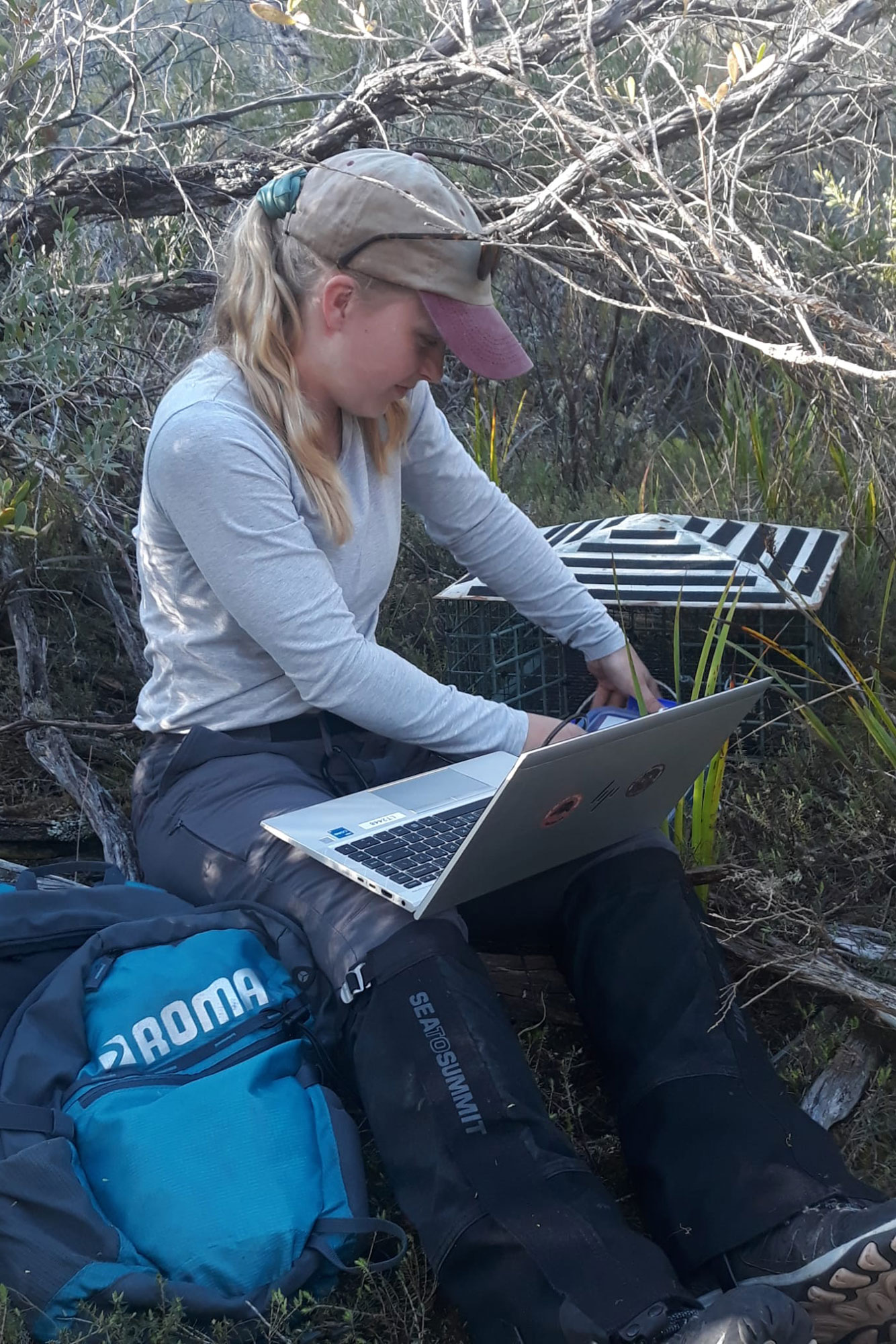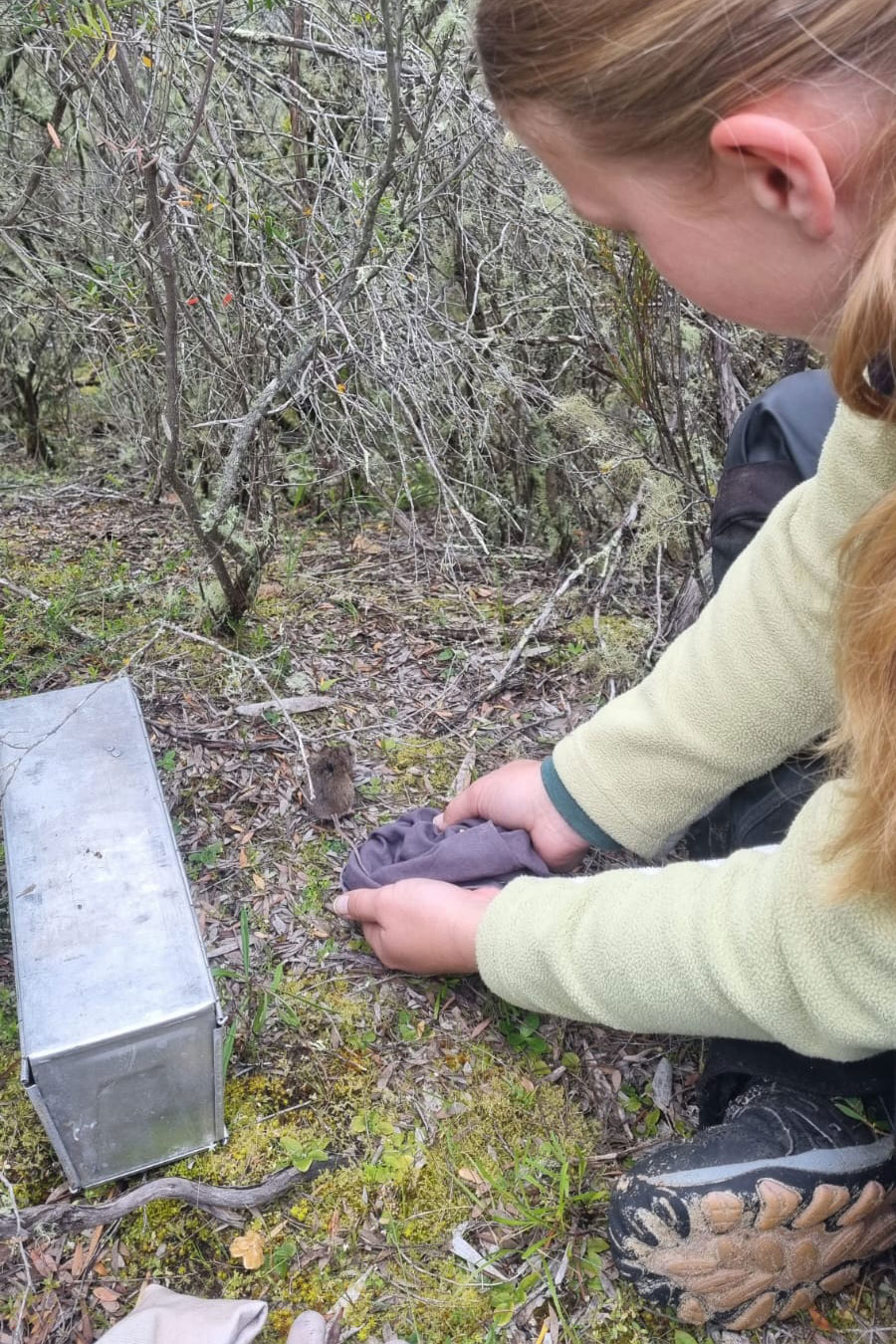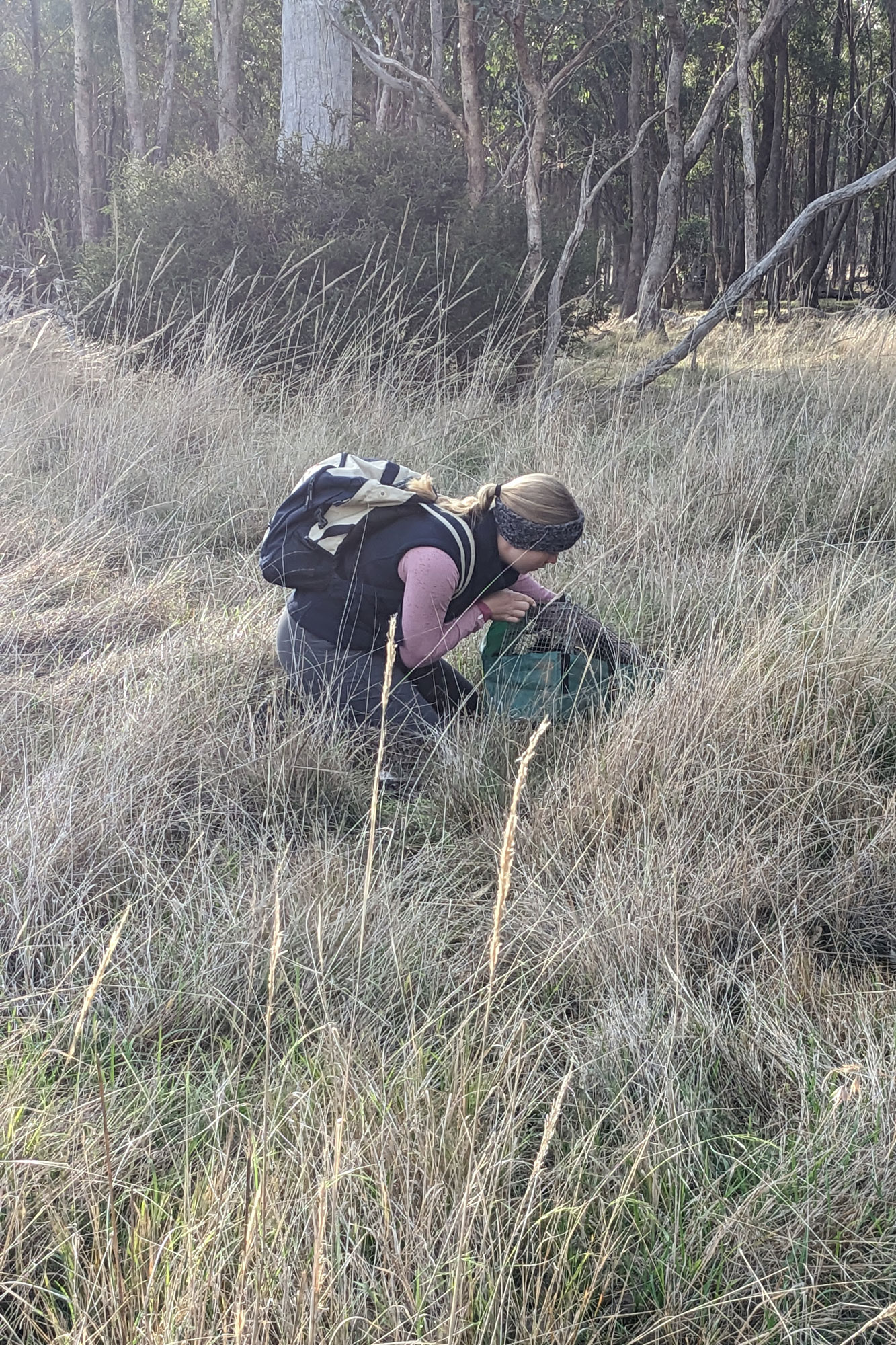The sun was setting and Nadia Nieuwhof “felt a nervous energy” as she and other researchers carried boxes containing Pookilas, a species of endangered native rodent, to their release site at Wilsons Promontory.
“We popped each cosy nest box down at the selected locations and slowly peeled back the little door,” said the University of Melbourne alum.
“It’s hard to describe the feeling of seeing those tiny little faces emerge and then slowly wander off into their new world. I feel incredibly lucky that I was able to be a part of it.”

This was the very first “genetic rescue release” of the animals ever, and it took place at Wilsons Promontory. Researchers had bred some Pookilas — also known as the New Holland mouse — from a healthy population in captivity and were reintroducing them back into the wild into an area where there were only limited numbers.
Now six months into the year-long Baillieu Myer Internship at Zoos Victoria, Nadia spends much of her time with the Pookilas. This species is extinct from seven of 12 historically occupied areas in Victoria. The remaining populations in East Gippsland have concerningly low genetic diversity, which makes them more vulnerable.
A lifelong love of conservation
Nadia’s passion for conservation stems from a deep love of animals and the natural world, which she’s felt for as long as she can remember. In primary school, her parents took her on life-changing trips to South Africa and the Amazon Rainforest.
“I remember going spotlighting for caimans (related to both crocodiles and alligators) from a dinghy on the Amazon, and I have memories of sleeping in one of those car rooftop tents while on safari in Africa, sitting up there at night listening to the hyenas walk around below,” she said.
 The native Pookila, also known as the New Holland mouse.
The native Pookila, also known as the New Holland mouse.
Her passion for wildlife led her into a Masters of Ecosystem Management and Conservation, Conservation Biology at the University of Melbourne. She said the highlight was meeting so many inspiring people, from lecturers to fellow students.
One of her lecturers, Dr Kath Handasyde, a wildlife conservationist for over 40 years, led the students on a group field project in Boho South forest, 130 kilometres northeast of Melbourne. “This was my first real experience with fieldwork and it certainly got me hooked,” Nadia said.

She also interned at Winton Wetlands - Australia’s largest wetland restoration project - where she saw what goes into protecting and restoring significant ecosystems.
“I did a small research project, investigating the nesting habitat and preferences of the freshwater turtle populations. This gave me invaluable practical field skills, but also skills in planning, leading and communicating.”
Amid several internship and volunteering experiences, for three years Nadia was a visitor host at Zoos Victoria’s Healesville Sanctuary, and volunteered at the Australian Wildlife Health Centre. During this time, she was inspired by the many others who’d been volunteering there for decades and the team of wildlife vets and vet nurses.
“As a visitor host, I was able to share important conservation messages. I spent most of my time in the Land of Parrots aviary and enjoyed talking to visitors about the beautiful birds, but also making people aware of the challenges facing birds in the wild and what we can do to help.”
Internship offers best of both worlds
Currently, as one of three interns in the Baillieu Myer Internship program at Zoos Victoria, she spends most of the time in Zoos Victoria’s Wildlife Conservation and Science department, focusing on the Pookila, either in the field or checking on its burrows at Melbourne Zoo.
The zoo and the Moonlit Sanctuary Wildlife Conservation Park have a joint breeding program to breed genetically diverse Pookila to improve genetic health and safely introduce them back into the wild.
The burrowing rodents are native to south-eastern Australia. Distinctive from the common House Mouse by their large eyes, rounded ears and pink and dusky brown tails, Pookilas eat seeds, leaves, fungi and small invertebrates.

In her internship, Nadia also works on other species, trekking into a forest in eastern Victoria to survey critically endangered Helmeted Honeyeaters.
“I feel like it’s really giving me the best of both worlds. I can learn about a wide range of species and I can take a deep dive into a particular species,” she said. Her other tasks include camera image analysis and literature reviews.
What has surprised her most is that Zoos Victoria has given her so much independence. “We’re largely able to determine our own schedules and trusted to hit the ground running with field work. I feel like I’m a truly respected and equal team member.”
In future, she hopes to publish a paper from her Pookila research. “This is where skills like scientific writing, which was a big takeaway from my time at university, really come in handy.”
Further study, in the form of a PhD, is on the cards, she said, but she would like to expand her practical knowledge and experience first.
As for Nadia’s advice to others wanting to pursue a career in conservation: “don’t let any opportunity slip past. Every little bit of wildlife experience counts. Also, when in doubt, reach out to teachers and mentors. They offer a wealth of knowledge and advice in terms of career and fieldwork opportunities.”
Find out more about Zoos Victoria's Baillieu Myer Internship Program.